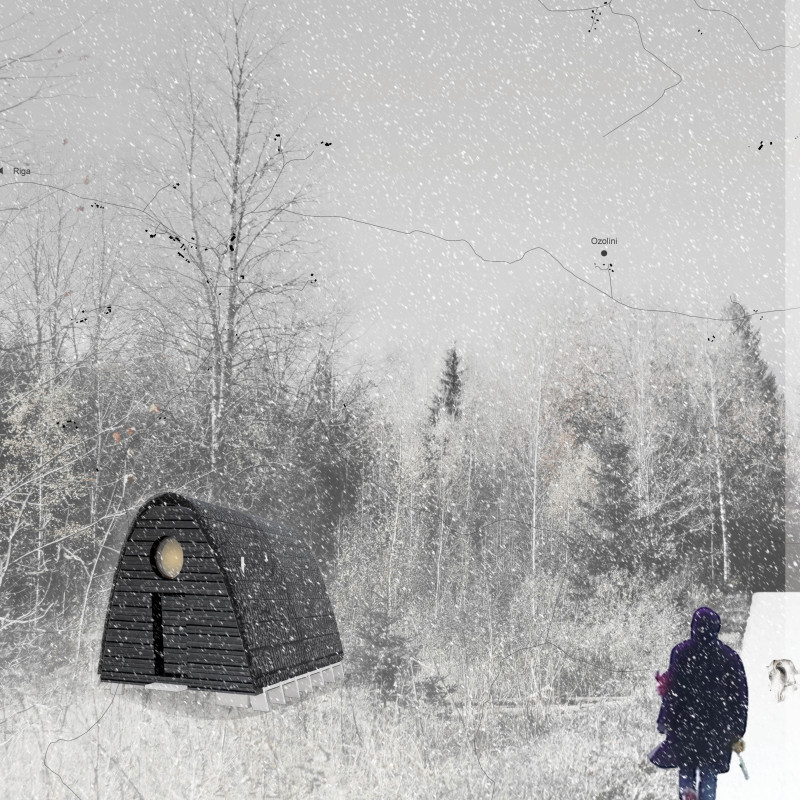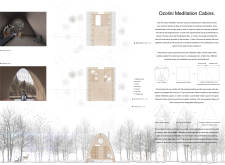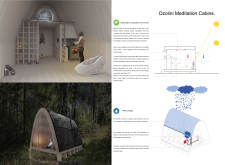5 key facts about this project
The Ozolini Meditation Cabins are located in Vidzeme, Latvia, a region known for its dense forests and peaceful lakes. The design focuses on creating spaces that encourage reflection and calmness, providing an environment where guests can reconnect with the natural world. By integrating elements of traditional Latvian architecture into a modern setting, the cabins enhance the experience of those who visit.
Design Concept
The cabins draw inspiration from local agricultural buildings, particularly Latvian barns. The design features a parabolic shape that departs from conventional structures, allowing for a more open and inviting atmosphere. This unique geometry serves a function, enhancing natural light and air circulation while establishing a connection with the surrounding landscape.
Spatial Organization
Inside, the cabins are arranged with clear areas for meditation and daily living. This thoughtful layout allows guests to move effortlessly from quiet contemplation to practical tasks. The interiors benefit from large windows that frame views of the outdoors, reinforcing the bond between the inhabitants and their environment. Ample light floods the space, promoting a sense of well-being during their stay.
Material Choices
Material selection plays a crucial role in this project, focusing on sustainability and local resources. The use of compacted straw bales for exterior walls offers effective insulation while adhering to eco-friendly construction standards. The roofs, made of local reed thatch, draw from regional traditions, providing durability and thermal efficiency. In addition, the entrance facade uses burned wood, adding texture and resilience to the design.
Design Details
Attention to detail is clearly visible in the features throughout the cabins. Panoramic windows capture the surrounding beauty, allowing nature to become part of the experience inside. The careful placement of these openings not only invites light but also encourages airflow, maintaining a fresh and pleasant atmosphere. This design approach aligns with the goal of creating a peaceful retreat, where visitors can focus on their personal journey.






















































